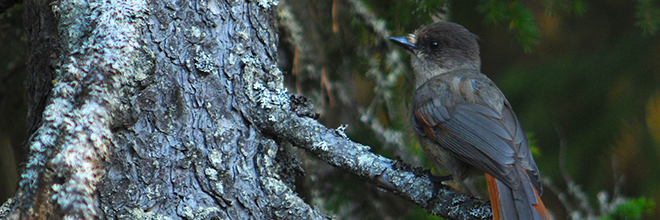Climate change also changes bird communities in conservation areas

A recent Finnish study has proven that changes in bird communities are as rapid in nature conservation areas as they are outside them.
Changes in the bird community can be examined through changes in the relative abundancies of different species. The bird community can be said to become “warmer” if species which favour southern, warmer climates become more common than northern species from colder areas.
For example, the northern Siberian jay is much “colder” in terms of its distribution area than its relative species, the Eurasian jay, which is also found in more temperate climes in southern and central Europe. Thus it can be said that a community in which the Eurasian jay becomes more numerous in comparison to the Siberian jay numbers is becoming warmer.
Northern species, such as the willow ptarmigan and the Siberian jay are more commonly tied to a particular habitat, such as forests, swamps or fells. Many southern species are generalists, which is to say that they can exist in many different types of habitats.
“Bird communities in conservation areas are changing according to climate change projections. Despite this, protected areas can mitigate the adverse effects of climate change,” states researcher Andrea Santangeli from the Finnish Museum of Natural History Luomus, an independent institute of the University of Helsinki.
In Finland, bird populations in conservation areas are typically ”cooler” than the populations around them.
“This is because the habitats in protected areas, such as old-growth forests and swamps, are important for northern species. Outside conservation areas, human land use favours the generalist species from warmer climates,” explains Academy Research Fellow Aleksi Lehikoinen from Luomus.
According to researchers, conservation areas can serve as buffer zones for the impacts of climate change. The more comprehensive the network of conservation areas, the better it can reduce the impacts of climate change.
The results are based on bird counts made since the 1970s in both conservation areas and elsewhere in Finland. The study is a joint project by Luomus and the Finnish State Forest Enterprise, and it was published on the website of the esteemed international Global Change Biology academic series.
Further information
Aleksi Lehikoinen, 045 1375732, aleksi.lehikoinen@helsinki.fi
- Original publication: Effects of high latitude protected areas on bird communities under rapid climate change
- Luomus website for bird monitoring: Participate